Preprocedural mouth rinses for preventing transmission of infectious diseases through aerosols in dental healthcare providers
- PMID: 35994295
- PMCID: PMC9394685
- DOI: 10.1002/14651858.CD013826.pub2
Preprocedural mouth rinses for preventing transmission of infectious diseases through aerosols in dental healthcare providers
Abstract
Background: Aerosols and spatter are generated in a dental clinic during aerosol-generating procedures (AGPs) that use high-speed hand pieces. Dental healthcare providers can be at increased risk of transmission of diseases such as tuberculosis, measles and severe acute respiratory syndrome (SARS) through droplets on mucosae, inhalation of aerosols or through fomites on mucosae, which harbour micro-organisms. There are ways to mitigate and contain spatter and aerosols that may, in turn, reduce any risk of disease transmission. In addition to personal protective equipment (PPE) and aerosol-reducing devices such as high-volume suction, it has been hypothesised that the use of mouth rinse by patients before dental procedures could reduce the microbial load of aerosols that are generated during dental AGPs.
Objectives: To assess the effects of preprocedural mouth rinses used in dental clinics to minimise incidence of infection in dental healthcare providers and reduce or neutralise contamination in aerosols.
Search methods: We used standard, extensive Cochrane search methods. The latest search date was 4 February 2022.
Selection criteria: We included randomised controlled trials and excluded laboratory-based studies. Study participants were dental patients undergoing AGPs. Studies compared any preprocedural mouth rinse used to reduce contaminated aerosols versus placebo, no mouth rinse or another mouth rinse. Our primary outcome was incidence of infection of dental healthcare providers and secondary outcomes were reduction in the level of contamination of the dental operatory environment, cost, change in mouth microbiota, adverse events, and acceptability and feasibility of the intervention.
Data collection and analysis: Two review authors screened search results, extracted data from included studies, assessed the risk of bias in the studies and judged the certainty of the available evidence. We used mean differences (MDs) and 95% confidence intervals (CIs) as the effect estimate for continuous outcomes, and random-effects meta-analysis to combine data MAIN RESULTS: We included 17 studies with 830 participants aged 18 to 70 years. We judged three trials at high risk of bias, two at low risk and 12 at unclear risk of bias. None of the studies measured our primary outcome of the incidence of infection in dental healthcare providers. The primary outcome in the studies was reduction in the level of bacterial contamination measured in colony-forming units (CFUs) at distances of less than 2 m (intended to capture larger droplets) and 2 m or more (to capture droplet nuclei from aerosols arising from the participant's oral cavity). It is unclear what size of CFU reduction represents a clinically significant amount. There is low- to very low-certainty evidence that chlorhexidine (CHX) may reduce bacterial contamination, as measured by CFUs, compared with no rinsing or rinsing with water. There were similar results when comparing cetylpyridinium chloride (CPC) with no rinsing and when comparing CPC, essential oils/herbal mouthwashes or boric acid with water. There is very low-certainty evidence that tempered mouth rinses may provide a greater reduction in CFUs than cold mouth rinses. There is low-certainty evidence that CHX may reduce CFUs more than essential oils/herbal mouthwashes. The evidence for other head-to-head comparisons was limited and inconsistent. The studies did not provide any information on costs, change in micro-organisms in the patient's mouth or adverse events such as temporary discolouration, altered taste, allergic reaction or hypersensitivity. The studies did not assess acceptability of the intervention to patients or feasibility of implementation for dentists. AUTHORS' CONCLUSIONS: None of the included studies measured the incidence of infection among dental healthcare providers. The studies measured only reduction in level of bacterial contamination in aerosols. None of the studies evaluated viral or fungal contamination. We have only low to very low certainty for all findings. We are unable to draw conclusions regarding whether there is a role for preprocedural mouth rinses in reducing infection risk or the possible superiority of one preprocedural rinse over another. Studies are needed that measure the effect of rinses on infectious disease risk among dental healthcare providers and on contaminated aerosols at larger distances with standardised outcome measurement.
Copyright © 2022 The Cochrane Collaboration. Published by John Wiley & Sons, Ltd.
Conflict of interest statement
SKN: none.
PE: none.
MP: none.
MN: none.
GS: none.
TF: none.
JHV: none.
Figures


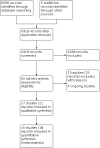
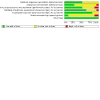
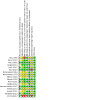
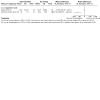
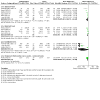
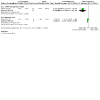
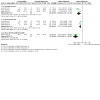
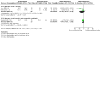
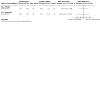
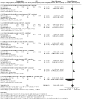
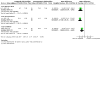
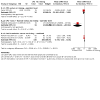
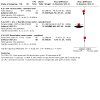
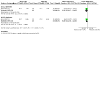
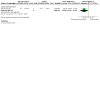
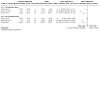
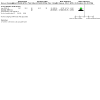
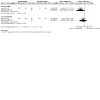
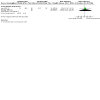

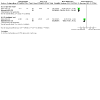
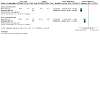
Update of
- doi: 10.1002/14651858.CD013826
Similar articles
-
Chlorhexidine mouthrinse as an adjunctive treatment for gingival health.Cochrane Database Syst Rev. 2017 Mar 31;3(3):CD008676. doi: 10.1002/14651858.CD008676.pub2. Cochrane Database Syst Rev. 2017. PMID: 28362061 Free PMC article.
-
Personal protective equipment for preventing highly infectious diseases due to exposure to contaminated body fluids in healthcare staff.Cochrane Database Syst Rev. 2016 Apr 19;4:CD011621. doi: 10.1002/14651858.CD011621.pub2. Cochrane Database Syst Rev. 2016. Update in: Cochrane Database Syst Rev. 2019 Jul 01;7:CD011621. doi: 10.1002/14651858.CD011621.pub3. PMID: 27093058 Free PMC article. Updated.
-
Local interventions for the management of alveolar osteitis (dry socket).Cochrane Database Syst Rev. 2022 Sep 26;9(9):CD006968. doi: 10.1002/14651858.CD006968.pub3. Cochrane Database Syst Rev. 2022. PMID: 36156769 Free PMC article.
-
Orthodontic treatment for crowded teeth in children.Cochrane Database Syst Rev. 2021 Dec 31;12(12):CD003453. doi: 10.1002/14651858.CD003453.pub2. Cochrane Database Syst Rev. 2021. PMID: 34970995 Free PMC article.
-
Systemic antibiotics for chronic suppurative otitis media.Cochrane Database Syst Rev. 2021 Feb 4;2(2):CD013052. doi: 10.1002/14651858.CD013052.pub2. Cochrane Database Syst Rev. 2021. Update in: Cochrane Database Syst Rev. 2025 Jun 9;6:CD013052. doi: 10.1002/14651858.CD013052.pub3. PMID: 35819801 Free PMC article. Updated.
Cited by
-
Effectiveness of interventions to reduce aerosol generation in dental environments: A systematic review.Prev Med Rep. 2023 Aug 25;35:102383. doi: 10.1016/j.pmedr.2023.102383. eCollection 2023 Oct. Prev Med Rep. 2023. PMID: 37680854 Free PMC article. Review.
-
Aerosol-generating procedures and associated control/mitigation measures: Position paper from the Canadian Dental Hygienists Association and the American Dental Hygienists' Association.Can J Dent Hyg. 2024 Feb 1;58(1):48-63. eCollection 2024 Feb. Can J Dent Hyg. 2024. PMID: 38505316 Free PMC article. Review.
-
In vitro analysis of various mouthwashes: cytotoxic, apoptotic, genotoxic and antibacterial effects.Clin Oral Investig. 2025 Mar 15;29(4):183. doi: 10.1007/s00784-025-06261-0. Clin Oral Investig. 2025. PMID: 40088292 Free PMC article.
-
Efficacy of preprocedural mouth rinses (Chlorhexidine, essential oil, and hydrogen peroxide) in reducing bacterial aerosols during dental scaling.BMC Oral Health. 2025 Jul 2;25(1):1004. doi: 10.1186/s12903-025-06308-4. BMC Oral Health. 2025. PMID: 40604752 Free PMC article. Clinical Trial.
References
References to studies included in this review
Bay 1993 {published data only}
-
- Bay NL, Overman PR, Krust-Bray K, Cobb C, Gross KB. Effectiveness of antimicrobial mouthrinses on aerosols produced by an air polisher. Journal of Dental Hygiene 1993;67(6):312-7. - PubMed
Feres 2010 {published data only}
-
- Feres M, Figueiredo LC, Faveri M, Stewart B, Vizio W. Pre-procedural mouthrinse reduces viable bacteria in dental aerosols. 87th General Session and Exhibition of IADR/AADR/CADR; 2009 Apr 1-4; Miami (FL) 2009.
-
- Feres M, Figueiredo LC, Faveri M, Stewart B, De Vizio W. The effectiveness of a preprocedural mouthrinse containing cetylpyridiniuim chloride in reducing bacteria in the dental office. Journal of the American Dental Association 2010;141(4):415-22. - PubMed
Fine 1993a {published data only}
-
- Fine DH, Yip J, Furgang D, Barnett ML, Olshan AM, Vincent J. Reducing bacteria in dental aerosols: pre-procedural use of an antiseptic mouthrinse. Journal of the American Dental Association 1993;124(5):56-8. [PMID: ] - PubMed
Gupta 2014 {published data only}
-
- Gupta G, Mitra D, Ashok KP, Gupta A, Soni S, Ahmed S, et al. Efficacy of preprocedural mouth rinsing in reducing aerosol contamination produced by ultrasonic scaler: a pilot study. Journal of Periodontology 2014;85(4):562-8. - PubMed
Joshi 2017 {published data only}
-
- Joshi AA, Padhye AM, Gupta HS. Efficacy of two pre-procedural rinses at two different temperatures in reducing aerosol contamination produced during ultrasonic scaling in a dental set-up – a microbiological study. Journal of International Academy of Periodontology 2017;19(4):138-44. - PubMed
Kaur 2014 {published data only}
-
- Desai VR [pers comm]. Re – study details: effect of chlorhexidine, povidone iodine, and ozone on microorganisms in dental aerosols: randomized double-blind clinical trial. WhatsApp to Sumanth Kumbargere Nagraj 3 May 2021. - PubMed
-
- Kaur R, Singh I, Vandana KL, Desai R. Effect of chlorhexidine, povidone iodine, and ozone on microorganisms in dental aerosols: randomized double-blind clinical trial. Indian Journal of Dental Research 2014;25(2):160-5. - PubMed
Mohammed 1964 {published data only}
-
- Mohammed CI, Manhold JH. Efficacy of preoperative oral rinsing to reduce air contamination during use of air turbine handpieces. Journal of the American Dental Association (1939) 1964;69(6):715. - PubMed
Mohammed 1970 {published data only}
-
- Mohammed CI, Monserrate V. Preoperative oral rinsing as a means of reducing air contamination during use of air turbine handpieces. Oral Surgery, Oral Medicine, Oral Pathology 1970;29(2):291-4. - PubMed
Mohan 2016 {published data only}
-
- Mohan M, Jagannathan N. The efficacy of pre-procedural mouth rinse on bacterial count in dental aerosol following oral prophylaxis. Dental and Medical Problems 2016;53(1):78-82.
Nayak 2020 {published data only}
-
- CTRI/2019/01/017038. Comparison of efficacy of 0.2% chlorhexidine and herbal mouth wash as a pre-procedural mouth rinsing in reducing aerosol contamination produced by ultrasonic scaler – microbiology study. trialsearch.who.int/Trial2.aspx?TrialID=CTRI/2019/01/017038 (first received 10 January 2019).
-
- Nayak SU, Kumari A, Rajendran V, Singh VP, Hegde A, Pai KK. Comparative evaluation of efficacy of chlorhexidine and herbal mouthwash as a preprocedural rinse in reducing dental aerosols: a microbiological study. International Journal of Dentistry 2020;2020:2021082. [DOI: 10.1155/2020/2021082] - DOI
Nisha 2021 {published data only}
-
- CTRI/2017/10/010189. Efficacy of pre-procedural boric acid mouth rinse in reducing viable bacteria in dental aerosols produced during ultrasonic scaling – a pilot study. www.ctri.nic.in/Clinicaltrials/pmaindet2.php?trialid=11806 (first received 5 October 2017).
Reddy 2012 {published data only}
Retamal‐Valdes 2017 {published data only}
-
- NCT02875769. Pre-procedural mouthwash in reducing bacteria in dental aerosols. clinicaltrials.gov/ct2/show/NCT02875769 (first received 23 August 2016).
-
- Retamal-Valdes B, Soares GM, Stewart B, Figueiredo LC, Faveri M, Miller S, et al. Effectiveness of a pre-procedural mouthwash in reducing bacteria in dental aerosols: randomized clinical trial. Pesquisa Odontologica Brasileira [Brazilian Oral Research] 2017;31:e21. - PubMed
Shetty 2013 {published data only}
-
- Shetty SK, Sharath K, Shenoy S, Sreekumar C, Shetty RN, Biju T. Compare the efficacy of two commercially available mouthrinses in reducing viable bacterial count in dental aerosol produced during ultrasonic scaling when used as a preprocedural rinse. Journal of Contemporary Dental Practice 2013;14(5):848-51. - PubMed
Suresh 2011 {published data only}
-
- Suresh S, Manimegalai M, Sudhakar S, Sopia. Comparison of efficacy of preprocedural rinsing with chlorhexidine and essential oil mouthwash in reducing viable bacteria in dental aerosols – a microbiological study. International Journal of Contemporary Dentistry 2011;2(6):1-6.
Tasneem 2017 {published data only}
-
- Tasneem S [pers comm]. Re: study details: effectiveness of preprocedural rinse with chlorhexidine and povidone iodine in preventing bioaerosol contamination during ultrasonic scaling – a clinical and microbiological study. E-mail to Sumanth Kumbargere Nagraj 7 April 2021.
-
- Tasneem SM, Prasad SS, Srinivas BV, Anil Kumar K, Yadav RK. Effectiveness of pre procedural rinse with chlorhexidine and povidone-iodine in preventing bio aerosol contamination during ultrasonic scaling – a clinical and microbiological study. Journal of Contemporary Medicine and Dentistry 2017;5(2):60-4.
Verma 2017 {published data only}
-
- Verma N, Baidya D, Makhijani B, Shetty N, Mathur A, Manohar B. Evaluation of aerosol contamination during ultrasonic procedures. Journal of Nepalese Society of Periodontology and Oral Implantology 2017;1:17-22.
-
- Verma N [pers comm]. Re – study details: effectiveness of preprocedural rinse with chlorhexidine and povidone iodine in preventing bioaerosol contamination during ultrasonic scaling – a clinical and microbiological study. E-mail to Sumanth Kumbargere Nagraj 4 May 2021.
References to studies excluded from this review
Altonen 1976 {published data only}
-
- Altonen M, Saxen L, Kosunen T, Ainamo J. Effect of two antimicrobial rinses and oral prophylaxis on preoperative degerming of saliva. International Journal of Oral Surgery 1976;5(6):276-84. - PubMed
Ciancio 1994 {published data only}
-
- Ciancio S. Expanded and future uses of mouthrinses. Journal of the American Dental Association 1994;125:29S-32S. - PubMed
CTRI/2017/10/010189 {published data only}
-
- CTRI/2017/10/010189. Use of boric acid mouth rinse in decreasing aerosols levels during scaling. trialsearch.who.int/Trial2.aspx?TrialID=CTRI/2017/10/010189 (first received 25 October 2017).
CTRI/2018/05/013935 {published data only}
-
- CTRI/2018/05/013935. Comparison of two mouthrinses in reducing aerosol contamination during ultrasonic scaling. trialsearch.who.int/Trial2.aspx?TrialID=CTRI/2018/05/013935 (first received 17 May 2018).
Dawson 2016 {published data only}
-
- Dawson M, Soro V, Dymock D, Price R, Griffiths H, Dudding T, et al. Microbiological assessment of aerosol generated during debond of fixed orthodontic appliances. American Journal of Orthodontics and Dentofacial Orthopedics 2016;150(5):831-8. [PMID: ] - PubMed
Devker 2012 {published data only}
-
- Devker NR, Mohitey J, Vibhute A, Chouhan VS, Chavan P, Malagi S, et al. A study to evaluate and compare the efficacy of preprocedural mouthrinsing and high volume evacuator attachment alone and in combination in reducing the amount of viable aerosols produced during ultrasonic scaling procedure. Journal of Contemporary Dental Practice 2012;13(5):681-9. - PubMed
Fine 1992 {published data only}
-
- Fine DH, Mendieta C, Barnett ML, Furgang D, Meyers R, Olshan A, et al. Efficacy of preprocedural rinsing with an antiseptic in reducing viable bacteria in dental aerosols. Journal of Periodontology 1992;63(10):821-4. - PubMed
Fine 1993b {published data only}
-
- Fine DH, Furgang D, Korik I, Olshan A, Barnett ML, Vincent JW. Reduction of viable bacteria in dental aerosols by preprocedural rinsing with an antiseptic mouthrinse. American Journal of Dentistry 1993;6(5):219-21. - PubMed
-
- Fine DH, Mendieta C, Furgang D, Yip J, Lieb R, Olshan A, et al. Reduction of aerosolized bacteria by a pre-procedural rinse. Journal of Dental Research 1991;70:411, 1165.
Klyn 2001 {published data only}
-
- Klyn SL, Cummings DE, Richardson BW, Davis RD. Reduction of bacteria-containing spray produced during ultrasonic scaling. General Dentistry 2001;49(6):648-52. [PMID: ] - PubMed
Litsky 1970 {published data only}
-
- Litsky BY, Mascis JD, Litsky W. Use of an antimicrobial mouthwash to minimize the bacterial aerosol contamination generated by the high-speed drill. Oral Surgery, Oral Medicine, Oral Pathology 1970;29(1):25-30. - PubMed
Logothetis 1995 {published data only}
-
- Logothetis DD, Martinez-Welles JM. Reducing bacterial aerosol contamination with a chlorhexidine gluconate pre-rinse. Journal of the American Dental Association 1995;126(12):1634-9. - PubMed
-
- Logothetis DD, Martinez-Welles JM. Reduction of bacterial aerosol contamination following a prerinse with chlorhexidine. Journal of Dental Research 1994;73:432.
Narayana 2016 {published data only}
NCT02319668 {published data only}
-
- NCT02319668. Antimicrobial agent for reducing bacteria in aerosols and oral cavity. clinicaltrials.gov/show/NCT02319668 (first received 18 December 2014).
NCT04659928 {published data only}
-
- NCT04659928. Evaluation of aerosol in a dental clinic. clinicaltrials.gov/show/NCT04659928 (first received 9 December 2020).
Paul 2020 {published data only}
Rajachandrasekaran 2019 {published data only}
-
- Rajachandrasekaran Y, Valiathan M, Jayaraman BG, Mahalakshmi K, Padmavathy K. An herbal alternative to control nosocomial pathogens in aerosols and splatter during ultrasonic scaling. Pesquisa Brasileira em Odontopediatria e Clinica Integrada 2019;19(1):e4807.
Ramesh 2015 {published data only}
-
- Ramesh A, Thomas JT, Muralidharan NP, Varghese SS. Efficacy of adjunctive usage of hydrogen peroxide with chlorhexidine AS preprocedural mouthrinse on dental aerosol. National Journal of Physiology, Pharmacy and Pharmacology 2015;5(5):431-5.
Santos 2014 {published data only}
Sawhney 2015 {published data only}
Swaminathan 2014 {published data only}
-
- Swaminathan Y, Thomas JT, Muralidharan NP. The efficacy of preprocedural mouth rinse of 0.2% chlorhexidine and commercially available herbal mouth containing salvadora persica in reducing the bacterial load in saliva and aerosol produced during scaling. Asian Journal of Pharmaceutical and Clinical Research 2014;7:71-4.
Toroglu 2001 {published data only}
-
- Toroglu MS, Haytac MC, Koksal F. Evaluation of aerosol contamination during debonding procedures. Angle Orthodontist 2001;71(4):299-306. - PubMed
Worrall 1987 {published data only}
-
- Worrall SF, Knibbs PJ, Glenwright HD. Methods of reducing bacterial contamination of the atmosphere arising from use of an air-polisher. British Dental Journal 1987;163(4):118-9. - PubMed
Young 2002 {published data only}
-
- Young MP, Carter DH, Worthington HV, McCord JF, Korachi M, Drucker DB. The effects of an immediately pre-surgical chlorhexidine oral rinse on the bacterial contaminants of bone debris collected during dental implant surgery. Clinical Oral Implants Research 2002;13(1):20-9. - PubMed
References to ongoing studies
CTRI/2021/03/031653 {published data only}
-
- Efficiency of a herbal mouthwash in decreasing infection from splatter production during dental treatment procedures. Ongoing study. 4 March 2021. Contact author for more information.
CTRI/2021/10/037528 {published data only}
-
- CTRI/2021/10/037528. Comparison of providone iodine and chlorhexidine as a mouth rinse before cleaning treatment to reduce the bacterial count during treatment. trialsearch.who.int/Trial2.aspx?TrialID=CTRI/2021/10/037528 (first received 25 October 2021).
NCT03839719 {published data only}
-
- NCT03839719. OSE as a pre-procedural mouth rinse: a clinical and microbiological study. clinicaltrials.gov/show/nct03839719 (first received 15 February 2019).
NCT04717063 {published data only}
-
- NCT04717063. Clinical efficacy of single-use of peroxyl mouthwash for reducing bacteria saliva and bioaerosol contamination phase 2. www.clinicaltrials.gov/ct2/show/NCT04717063 (first received 20 January 2021).
Additional references
ADA 1996
-
- American Dental Association. ADA statement on dental unit waterlines. Journal of American Dental Association 1996;127:185-6.
Alshehri 2018
Araujo 2015
-
- Araujo MW, Charles CA, Weinstein RB. Meta-analysis of the effect of an essential oil-containing mouthrinse on gingivitis and plaque. Journal of American Dental Association 2015;146(8):610-22. - PubMed
Barnes 1998
-
- Barnes JB, Harrel SK, Rivera-Hidalgo F. Blood contamination of the aerosols produced by in vivo use of ultrasonic scalers. Journal of Periodontology 1998;69(4):434-8. - PubMed
Bidra 2020
Burton 2020a
-
- Burton MJ, Clarkson JE, Goulao B, Glenny A-M, McBain AJ, Schilder AG, et al. Antimicrobial mouthwashes (gargling) and nasal sprays administered to patients with suspected or confirmed COVID-19 infection to improve patient outcomes and to protect healthcare workers treating them. Cochrane Database of Systematic Reviews 2020, Issue 9. Art. No: CD013627. [DOI: 10.1002/14651858.CD013627.pub2] - DOI - PMC - PubMed
Burton 2020b
-
- Burton MJ, Clarkson JE, Goulao B, Glenny A-M, McBain AJ, Schilder AG, et al. Antimicrobial mouthwashes (gargling) and nasal sprays administered to patients with suspected or confirmed COVID-19 infection to improve patient outcomes and to protect healthcare workers treating them. Cochrane Database of Systematic Reviews 2020, Issue 9. Art. No: CD013627. [DOI: 10.1002/14651858.CD013627.pub2] - DOI - PMC - PubMed
Cai 2020
Carrilho 2010
CDC 2003
-
- Centers for Disease Control and Prevention. Guidelines for infection control in dental health-care settings. Morbidity and Mortality Weekly Report. Surveillance Summaries : MMWR 2003;52(RR-17):29, 45. - PubMed
CDC 2020
-
- Centers for Disease Control and Prevention. Dental settings: interim infection prevention and control guidance for dental settings during the COVID-19 response. cdc.gov/coronavirus/2019-ncov/hcp/dental-settings.html (accessed 6 August 2020).
Chanpong 2020
Ciancio 2000
-
- Ciancio SG. Antiseptics and antibiotics as chemotherapeutic agents for periodontitis management. Compendium Continuing Education in Dentistry 2000;21(1):59-78. - PubMed
Claffey 2003
-
- Claffey N. Essential oil mouthwashes: a key component in oral health management. Journal of Clinical Periodontology 2003;30:22-4. - PubMed
Clarkson 2020
-
- Clarkson J, Ramsay C, Richards D, Robertson C, Aceves-Martins M, on behalf of the CoDER Working Group. Aerosol generating procedures and their mitigation in international dental guidance documents – a rapid review. oralhealth.cochrane.org/news/aerosol-generating-procedures-and-their-mit... (accessed prior to 27 July 2022).
COMET 2020
-
- COMET Initiative. Core outcome measures in effectiveness trials. www.comet-initiative.org/ (accessed prior to 27 July 2022).
CONSORT 2010
-
- CONSORT Group. CONSORT Statement. www.consort-statement.org/ (accessed 19 June 2021).
Corner 1988
DoH 2013
-
- Department of Health. Decontamination health technical memorandum 01-05: decontamination in primary care dental practices. www.england.nhs.uk/publication/decontamination-in-primary-care-dental-pr... (accessed prior to 27 July 2022).
Dua 2015
-
- Dua K, Sheshala R, Al-Waeli HA, Gupta G, Chellappan DK. Antimicrobial efficacy of extemporaneously prepared herbal mouthwashes. Recent Patents on Drug Delivery & Formulation 2015;9(3):257-91. - PubMed
Eggers 2018
Eliades 2020
-
- Eliades T, Koletsi D. Minimizing the aerosol-generating procedures in orthodontics in the era of a pandemic: current evidence on the reduction of hazardous effects for the treatment team and patients. American Journal of Orthodontics and Dentofacial Orthopedics 2020;158(3):330-42. [DOI: 10.1016/j.ajodo.2020.06.002] - DOI - PMC - PubMed
Estrich 2020
Fallahi 2020
FGDP 2020
-
- Faculty of General Dental Practice. Implications of COVID-19 for the safe management of general dental practice – a practical guide. www.fgdp.org.uk/implications-covid-19-safe-management-general-dental-pra... (accessed August 2020).
Fine 1996
-
- Fine DH, Korik I, Furgang D. Assessing pre-procedural subgingival irrigation and rinsing with an antiseptic mouthrinse to reduce bacteremia. Journal of American Dental Association 1996;127(5):641-6. - PubMed
Gottsauner 2020
Gross 1992
-
- Gross KB, Overman PR, Cobb C, Brockmann S. Aerosol generation by two ultrasonic scalers and one sonic scaler. A comparative study. Journal of Dental Hygiene 1992;66(7):314-8. - PubMed
Harrel 2004
Higgins 2011
-
- Higgins JP, Green S, editor(s). Cochrane Handbook for Systematic Reviews of Interventions Version 5.1.0 (updated March 2011). Available from training.cochrane.org/handbook/archive/v5.1/.
Higgins 2019
-
- Higgins JP, Thomas J, Chandler J, Cumpston M, Li T, Page MJ, et al, editor(s). Cochrane Handbook for Systematic Reviews of Interventions. 2nd edition. Chichester (UK): John Wiley & Sons, 2019.
Hossainian 2011
-
- Hossainian N, Slot DE, Afennich F, Weijden GA. The effects of hydrogen peroxide mouthwashes on the prevention of plaque and gingival inflammation: a systematic review. International Journal of Dental Hygiene 2011;9(3):171-81. - PubMed
Hughes 2020
Hunter 2014
Jackson 2020
James 2016
-
- James R, Mani A. Dental aerosols: a silent hazard in dentistry. International Journal of Scientific Research 2016;5:1761-3.
Jeong 2020
Jones 1997
Jones 2015
-
- Jones RM, Brosseau LM. Aerosol transmission of infectious disease. Journal of Occupational and Environmental Medicine 2015;57(5):501-8. [PMID: ] - PubMed
Kanagalingam 2015
Kariwa 2004
-
- Kariwa H, Fujii N, Takashima I. Inactivation of SARS coronavirus by means of povidone-iodine, physical conditions, and chemical reagents. Japanese Journal of Veterinary Research 2004;52(3):105-12. - PubMed
Koletsi 2020
Laheij 2012
Lefebvre 2020
-
- Lefebvre C, Glanville J, Briscoe S, Littlewood A, Marshall C, Metzendorf M-I, et al. Technical Supplement to Chapter 4: Searching for and selecting studies. In: Higgins JP, Thomas J, Chandler J, Cumpston M, Li T, Page MJ, Welch VA, editor(s). Cochrane Handbook for Systematic Reviews of Interventions Version 6.1 (updated September 2020). Cochrane, 2020. training.cochrane.org/handbook/archive/v6.1.
Li 2004
Li 2020
Luan 2008
-
- Luan Q, Desta T, Chehab L, Sanders VJ, Plattner J, Graves DT. Inhibition of experimental periodontitis by a topical boron-based antimicrobial. Journal of Dental Research 2008;87(2):148-52. [PMID: ] - PubMed
Mair 2020
-
- Mair AD, Korne PH. Decoding dental aerosols. secibonline.com/wp-content/uploads/2020/05/Decoding-Dental-Aerosols_May-... (accessed 16 August 2020).
Mandel 1994
Manipal 2016
Marui 2019
-
- Marui VC, Souto ML, Rovai ES, Romito GA, Chambrone L, Pannuti CM. Efficacy of preprocedural mouthrinses in the reduction of microorganisms in aerosol: a systematic review. Journal of American Dental Association 2019;150(12):1015-26. - PubMed
Mathur 2018
-
- Mathur A, Gopalakrishnan D, Mehta V, Rizwan SA, Shetiya SH, Bagwe S. Efficacy of green tea-based mouthwashes on dental plaque and gingival inflammation: a systematic review and meta-analysis. Indian Journal of Dental Research 2018;29(2):225-32. - PubMed
Meister 2020
Meng 2020
Mohd‐Said 2021
Moosavi 2020
Mosaddad 2019
-
- Mosaddad SA, Tahmasebi E, Yazdanian A, Rezvani MB, Seifalian A, Yazdanian M, et al. Oral microbial biofilms: an update. European Journal of Clinical Microbiology & Infectious Diseases 2019;38(11):2005-19. [PMID: ] - PubMed
Munita 2016
Mupparapu 2019
-
- Mupparapu M, Kothari KR. Review of surface disinfection protocols in dentistry: a 2019 update. Quintessence International 2019;50(1):58-65. - PubMed
Nagayoshi 2004
-
- Nagayoshi M, Fukuizumi T, Kitamura C, Yano J, Terashita M, Nishihara T. Efficacy of ozone on survival and permeability of oral microorganisms. Oral Microbiology and Immunology 2004;19(4):240-6. [PMID: ] - PubMed
Nagraj 2020
-
- Nagraj SK, Eachempati P, Paisi M, Nasser M, Sivaramakrishnan G, Verbeek JH. Interventions to reduce contaminated aerosols produced during dental procedures for preventing infectious diseases. Cochrane Database of Systematic Reviews 2020, Issue 10. Art. No: CD013686. [DOI: 10.1002/14651858.CD013686.pub2] - DOI - PMC - PubMed
Nokam Kamdem 2022
-
- Nokam Kamdem GS Jr, Toukam M, Ntep Ntep DB, Kwedi KG, Zilefac BN, Fokam ST, et al. Comparison of the effect of saline mouthwash versus chlorhexidine on oral flora. Advances in Oral and Maxillofacial Surgery 2022;6:100273.
Ortega 2020
Pasquarella 2000
-
- Pasquarella C, Pitzurra O, Savino A. The index of microbial air contamination. Journal of Hospital Infection 2000;46(4):241-56. [PMID: ] - PubMed
Patarakulwiwat 2018
-
- Patarakulwiwat P, Rodanant P. Importance of patient's position during oral prophylaxis: a simulated study in phantom head. Mahidol Dental Journal 2018;38:39-44.
Pedrazzi 2015
Popkin 2017
Rayyan 2016 [Computer program]
-
- Rayyan QCRI, the Systematic Reviews web app. Qatar Computing Research Institute, Hamad Bin Khalifa University. Doha, Qatar: Qatar Computing Research Institute, Hamad Bin Khalifa University, 2016.
Reis 2021
Review Manager 2020 [Computer program]
-
- Review Manager 5 (RevMan 5). Version 5.4. Copenhagen: Nordic Cochrane Centre, The Cochrane Collaboration, 2020.
Sağlam 2013
-
- Sağlam M, Arslan U, Buket Bozkurt Ş, Hakki SS. Boric acid irrigation as an adjunct to mechanical periodontal therapy in patients with chronic periodontitis: a randomized clinical trial. Journal of Periodontology 2013;84(9):1297-308. [PMID: ] - PubMed
Samaranayake 2021
-
- Samaranayake LP, Fakhruddin KS, Buranawat B, Panduwawala C. The efficacy of bio-aerosol reducing procedures used in dentistry: a systematic review. Acta Odontologica Scandinavica 2021;79(1):69-80. [PMID: ] - PubMed
SDCEP 2021
-
- SDCEP 2021. Mitigation of aerosol generating procedures in dentistry – a rapid review. www.sdcep.org.uk/wp-content/uploads/2021/04/SDCEP-Mitigation-of-AGPs-in-... (accessed prior to 27 July 2022).
Seneviratne 2021
Sridharan 2016
Tartaglia 2019
To 2020
Veena 2015
Verbeek 2020
-
- Verbeek JH, Rajamaki B, Ijaz S, Sauni R, Toomey E, Blackwood B, et al. Personal protective equipment for preventing highly infectious diseases due to exposure to contaminated body fluids in healthcare staff. Cochrane Database of Systematic Reviews 2020, Issue 4. Art. No: CD011621. [DOI: 10.1002/14651858.CD011621.pub4] - DOI - PMC - PubMed
Waffenschmidt 2020
-
- Waffenschmidt S, Navarro-Ruan T, Hobson N, Hausner E, Sauerland S, Haynes RB. Development and validation of study filters for identifying controlled non-randomized studies in PubMed and Ovid MEDLINE. Research Synthesis Methods 2020;11(5):617-26. - PubMed
Walsh 2000
-
- Walsh LJ. Safety issues relating to the use of hydrogen peroxide in dentistry. Australian Dental Journal 2000;45(4):257-89. - PubMed
Wani 2021
-
- Wani AR, Yadav K, Khursheed A, Rather MA. An updated and comprehensive review of the antiviral potential of essential oils and their chemical constituents with special focus on their mechanism of action against various influenza and coronaviruses. Microbial Pathogenesis 2021;152:104620. - PMC - PubMed
Wells 1934
-
- Wells WF. On air-borne infection: study II. Droplets and droplet nuclei. American Journal of Epidemiology 1934;20:611-8. [DOI: 10.1093/oxfordjournals.aje.a118097] - DOI
Yoon 2020
References to other published versions of this review
Kumbargere Nagraj 2020
-
- Kumbargere Nagraj S, Eachempati P, Paisi M, Nasser M, Sivaramakrishnan G, Verbeek JH, et al. Preprocedural mouth rinses for preventing transmission of infectious diseases through aerosols in dental healthcare providers. Cochrane Database of Systematic Reviews 2020, Issue 12. Art. No: CD013826. [DOI: 10.1002/14651858.CD013826] - DOI - PMC - PubMed
Publication types
MeSH terms
Substances
LinkOut - more resources
Full Text Sources
Medical
Research Materials
Miscellaneous

